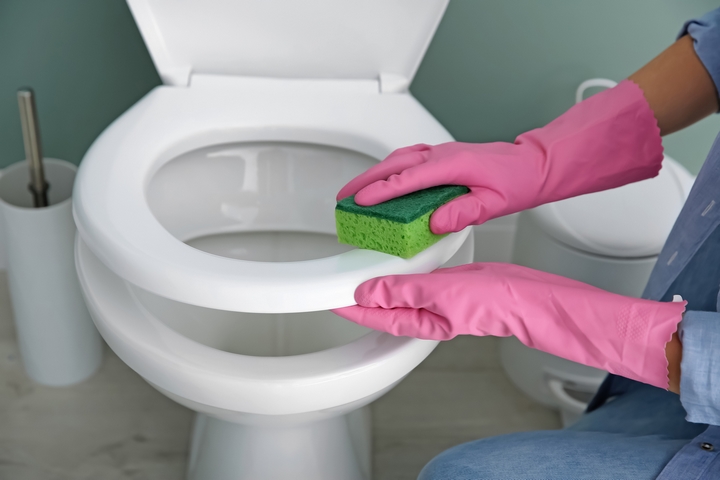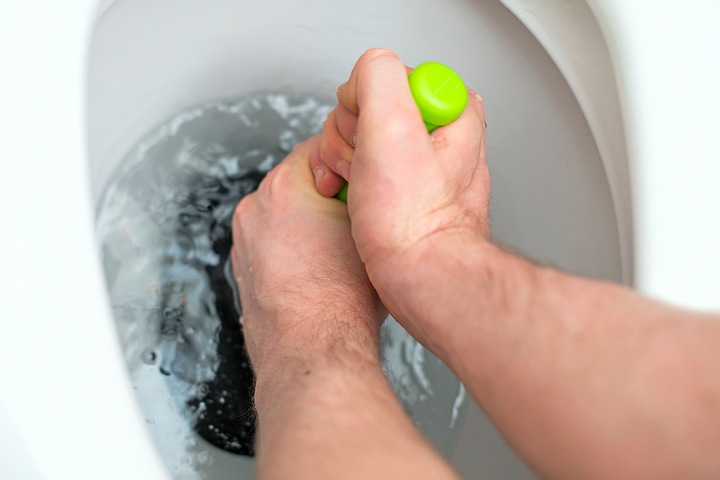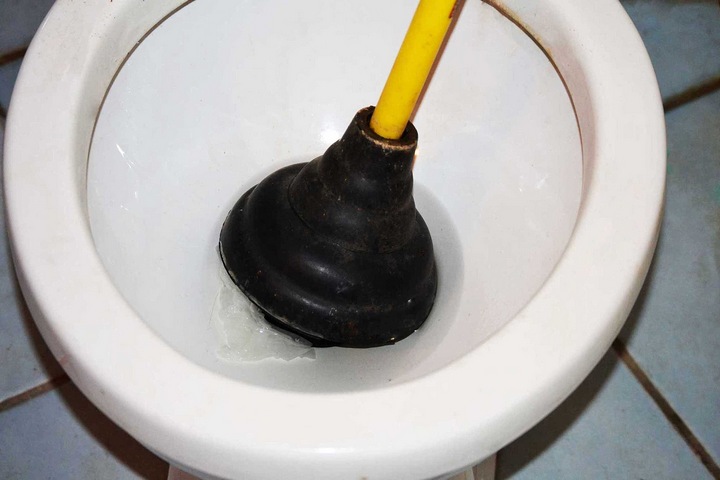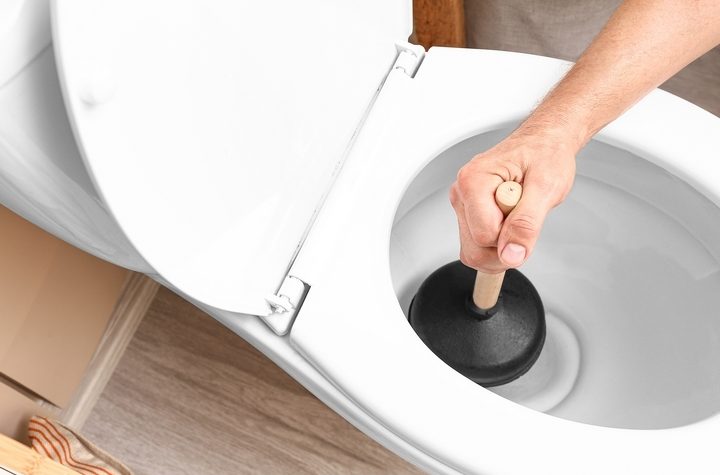We’ve all been there. You’ve done your business, flushed the toilet, and it’s plugged! There is not much worse than that for sure. What now?
Most people own a plunger, and it sits beside the toilet, waiting for an opportunity to help out. All you do is stick it over the drain hole and plunge a few times, and you should be good to go, right? Well, plunging a toilet is a lot more complicated than it sounds.
Due to the complexity involved, many homeowners are advised to contact a plumber for help. However, you can also try plunging the toilet yourself, especially if it’s just a minor clog. If you want to succeed in this endeavour, here is the correct way on how to plunge a toilet:
Use the right plunger

Before we start, you need to understand the three basic types of plungers. The flat cup plunger, the flange plunger, and the accordion plunger are there.
Cup Plunger
We all recognize this type as the red plunger on a wooden handle. It is made of thick rubber and can sit flat on a surface. This is because this plunger is made for sinks and tubs where the drain is located on a flat surface.
The cup makes a perfect seal over the drain, creating a vacuum to dislodge the clog in the drain pipe. Because of the shape of a toilet bowl, it is hard to make a proper seal with a cup plunger.
Flange Plunger
The design of the flange plunger is different. It has a similar rubber cup on a long handle, but a soft rubber flange extends out of the cup. This lets you fit the fold-out flap into the curved toilet drain and make a good seal.
It also prevents the cup from turning inside out and catching wastewater inside. The flange can be tucked inside to make it a standard cup plunger.
Accordion Plunger
An accordion plunger is made from hard plastic, designed with pleats, allowing it to collapse like and accordion. It also has an extended lip to go into the toilet drain. It does create a lot of plunging force, but it is hard to get a proper seal over the drain hole.
The best plungers in the house are a cup plunger for sinks and tubs and a flange plunger for toilets. Never use one plunger for all your needs because it is not hygienic.
Drain standing water from toilet

While your toilet could fill up with water when plugged, some water may drain out slowly before you start plunging. To plunge, you need to have enough water in the bowl to submerge the head of the plunger.
You can gently depress the flush handle to allow some water in or use a cup to transfer water from the sink to the bowl.
Wear rubber gloves

Plunging a toilet can be a messy business and if you want to avoid getting wastewater on your hands, put on a pair of rubber gloves. Your toilet may have standing water up near the top, and any disturbance could cause water to flood over the top. Have some old rags or towels ready to wrap around the toilet base. You can just toss these in the trash or wash them if you dare when you are all done plunging.
Make a seal on the toilet

Now is the time to put your plunger to work. Gently dip the rubber end into the water and down over the drain. Try not to rush because you don’t want to splash around the contents. You may have to navigate through toilet paper and body debris to get there, so if you can’t see the drain hole, do your best to guide the plunger to its position.
Once you are there, cover it tight one the drain and make the first seal. Push down to get the air out of the plunger and keep it firm, so you don’t break the seal. Now you are ready!
Plunge the toilet

This is where your talents will shine. The idea is to use a strong force, both up and down, with equal weight to fully depress the plunger, creating a vacuum effect. This will build up suction and pressure, so make sure not to break the seal.
Repeat this forceful motion for 10-20 seconds and break the seal. This will force the water down the drain, and hopefully, the clog has been disturbed enough by the vacuum to be washed away. If the drain is still plugged, repeat the process until the clog clears.
Flush the toilet

Now it’s time to give your toilet a flush. The weight from the water in the holding tank should help push the clog out and restore normal working order to your toilet. Keep the plunger in the toilet while you flush a few times to rinse off any debris sticking to it. You can also use your toilet scrubber with a cleaner to scrub the plunger and then the toilet. Dry off the plunger with the old rags and store it in its usual place, ready to jump into action again when needed.
Now you are a plunging pro! While it may seem silly to need a how-to for plunging a toilet, it’s worth following these steps for a trouble-free unclogging experience.




